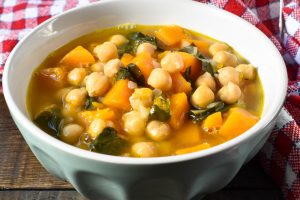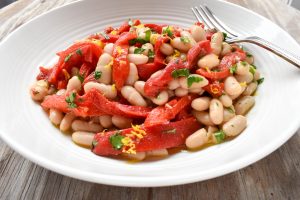Healthy pantry recipes
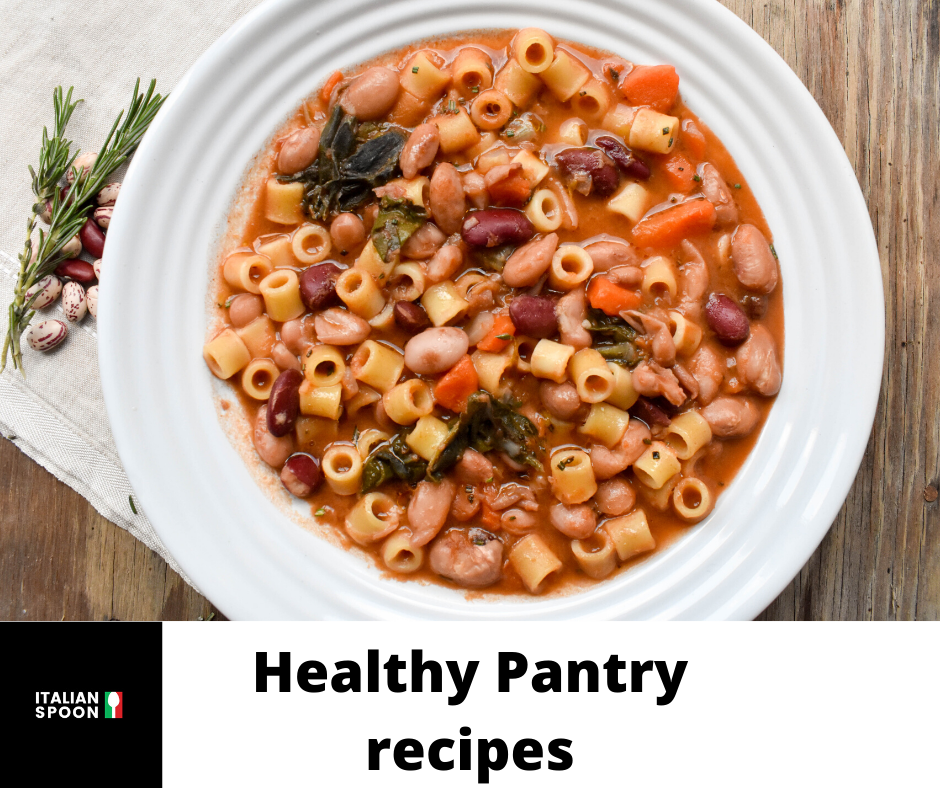
In Italian cuisine, healthy pantry foods such as canned tomatoes, Italian passata, canned tuna, lentils, beans, olive oi and pasta are must-have items. The list is actually much longer but the point is that you would be surprised at what you can make using the ingredients that are already in your pantry. I also find it very satisfying to make a delicious meal for little cost. Read our blog and plan healthy meals around what you have left in the pantry.
Living in Australia and growing up in a typical Italian family, we had a well-stocked pantry, fridge and freezer. My parents and grandparents were very careful not to waste or throw away food. I have memories of opening the freezer at my house and Nonna (grandmother’s) home and being amazed by the stack of large ice cream containers. Upon opening, I discovered that most of the ice cream containers were actually full of Italian pasta sauce. There was enough to feed us for over a month. I remember checking each container. Sometimes there was ice cream and other times, to my disappointment, there was just sauce. My family are great at not only storing sauce but converting a few cans of food as the base to create fabulous dishes for the whole family to enjoy.
Before we get to our recipes, here are tips to organise your pantry and meal planning.
Tips to organise your pantry, fridge and freezer
Whenever you buy new groceries, check the packaging for the use by date. Move the older products with a closer use by date to the front of your pantry so you use them first. The same process goes for the fridge. Store a few freezer meals, keeping in mind that the food in the freezer does not last forever. Develop a process of clearly labelling to identify frozen food items including the purchase date before they go into the freezer. Once again use the same process of placing the newly purchased items to the back of the freezer. Consider donating food to a local food bank or charity if you are in a position to do so.
Meal Planning and portion control
Before planning the pantry recipes to cook, check your fridge and pantry and decide what to use in the next 7 days. There are so many benefits to meal planning and it can all be done on the Italian Spoon website. ‘My Meal Plan’ is free and available exclusively to Italian Spoon members. Make a shopping list of any additional ingredients you may need. These are tough times so I am crossing my fingers that you will find what you need. Another thing I will say is forget the idea of super-sized food portions – it’s wasteful and not healthy for you. Using small plates can also help with this.
Healthy pantry recipes
I love to use fresh, seasonal produce. In recent times, there has been a need to dip into our pantry more than usual. I say, let’s make the most of it! You can use pantry items to create delicious and budget-friendly Italian meals for the whole family. Here are our top healthy pantry recipes to get you started.
Canned tomato recipes
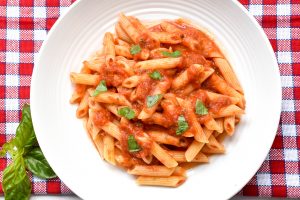
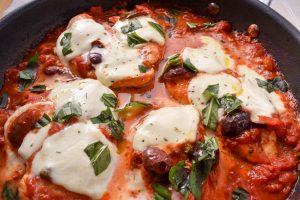 Penne pasta al pomodoro (with Italian tomato sauce)
Penne pasta al pomodoro (with Italian tomato sauce)
Chicken alla pizzaiola
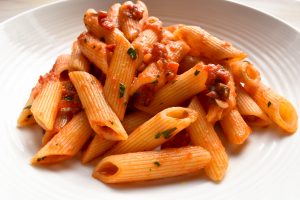
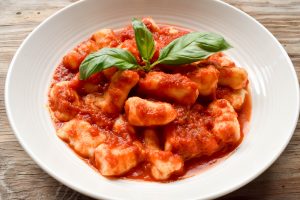 Penne all’arrabiata
Penne all’arrabiata
Potato gnocchi with tomato and basil sauce
Bean recipes
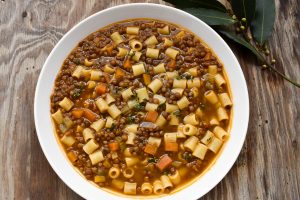
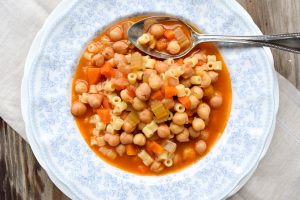 Lentil soup
Lentil soup
Pasta e ceci (with chickpeas)
Cannellini bean and capsicum salad
Canned tuna recipes
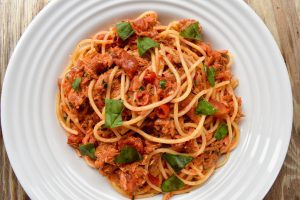
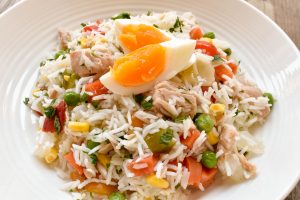 Spaghetti pasta with tuna
Spaghetti pasta with tuna
Italian rice salad with tuna eggs and giardiniera
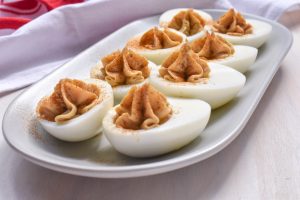
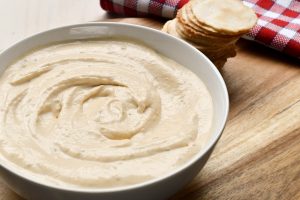 Uova alla diavola (Italian-style devilled eggs)
Uova alla diavola (Italian-style devilled eggs)
Tuna and caper dip
Pasta recipes
Not to worry if you don’t have the specified pasta as you can substitute it for the pasta shape you have on hand.
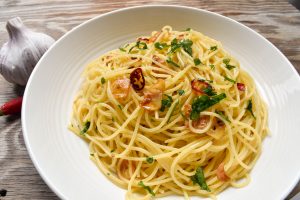
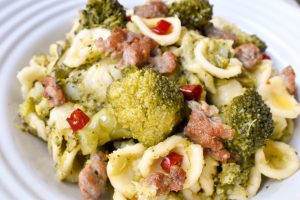 Spaghetti aglio, olio e peperoncino (with garlic, olive oil and chilli)
Spaghetti aglio, olio e peperoncino (with garlic, olive oil and chilli)
Orecchiette pasta with broccoli, Italian pork sausage and chilli
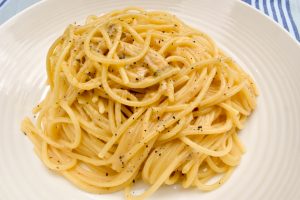
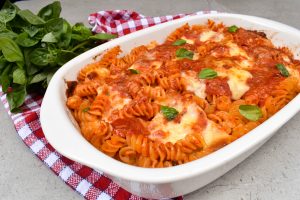 Spaghetti with cacio e pepe (cacio cheese and pepper)
Spaghetti with cacio e pepe (cacio cheese and pepper)
Pasta alla sorrentina
Ideas to use up other household items
35% of the average Australian household bin is food waste. Here are 8 commonly wasted foods and how to use them up.
#1 Bread:
Bread is gold in Italian cuisine. Do you find yourself with excess bread which gets thrown away? Freeze bread while fresh or use it up for toasties, soups, to make croutons or dry bread out in the oven and convert to breadcrumbs.
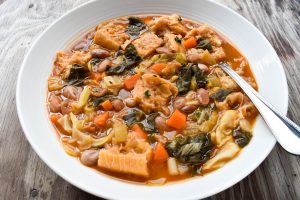 Recipe ideas: Fusilli pasta ‘con pomodorini e pangrattato’ (with cherry tomatoes and toasted breadcrumbs), La ribollita, Bruschetta caprese, French toast and Pappa al Pomodoro.
Recipe ideas: Fusilli pasta ‘con pomodorini e pangrattato’ (with cherry tomatoes and toasted breadcrumbs), La ribollita, Bruschetta caprese, French toast and Pappa al Pomodoro.
#2 Milk:
Don’t pour milk down the sink. Use your excess milk to make fruit smoothies, Besciamella (Bechamel) sauce, mashed potatoes and Crema Pasticciera (pastry cream). You can even soak fish in milk which is a great tip to get rid of the fish odour.
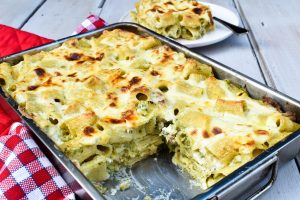 Recipe ideas: Creamy cauliflower pasta al forno (pasta bake), Creamy broccoli and pork sausage pasta al forno (pasta bake), Creamy mashed potatoes, Crostata ‘ai lamponi e crema pasticciera’ (raspberry and vanilla bean cream tart) and Pan fried silver whiting.
Recipe ideas: Creamy cauliflower pasta al forno (pasta bake), Creamy broccoli and pork sausage pasta al forno (pasta bake), Creamy mashed potatoes, Crostata ‘ai lamponi e crema pasticciera’ (raspberry and vanilla bean cream tart) and Pan fried silver whiting.
#3 Potatoes:
Store potatoes in a dark, cool place to keep fresh for longer. If you have a large sack of potatoes, increase the storage life by breaking them up into several small bags rather than in one large one to maximise ventilation. Bag up potatoes in sacks made of paper or hessian – you can also use baskets. Here are some recipe ideas to use excess potatoes:
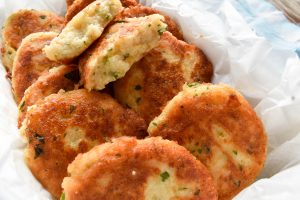 Recipe ideas: Creamy mashed potatoes, Potato gnocchi, Sicilian polpette di patate (potato balls), Frittata ‘di patate’ (of potatoes) and Nonna’s potato bake.
Recipe ideas: Creamy mashed potatoes, Potato gnocchi, Sicilian polpette di patate (potato balls), Frittata ‘di patate’ (of potatoes) and Nonna’s potato bake.
#4 Cheese:
Italy produces the largest variety of cheeses in the world, with over 2500 traditional varieties. It’s no wonder I am a huge cheese fan! The first step in reducing waste is to individually wrap cheese in grease-proof or baking paper. Wrapping your cheese prevents it from drying out and helps to retain moisture to last longer. No matter which cheese you have left over from Parmigiano Reggiano, Gorgonzola blue cheese, Mozzarella to Ricotta, the Italian Spoon website has recipes to give your cheese a new life before it goes to waste. You can even use Parmesan rind to add flavour to risotto and soups (and discard before serving).
 Recipe ideas: Maccheroni pasta al formaggino (Italian mac and cheese), Potato gnocchi with creamy gorgonzola sauce, Traditional meat lasagne, Involtini of ‘cotoletta di pollo’ (crumbed chicken schnitzel), Spaghetti with ‘cacio e pepe’ (cacio cheese and pepper) and don’t forget that you can make panini such as Panini with salami and swiss cheese or grilled cheese sandwiches.
Recipe ideas: Maccheroni pasta al formaggino (Italian mac and cheese), Potato gnocchi with creamy gorgonzola sauce, Traditional meat lasagne, Involtini of ‘cotoletta di pollo’ (crumbed chicken schnitzel), Spaghetti with ‘cacio e pepe’ (cacio cheese and pepper) and don’t forget that you can make panini such as Panini with salami and swiss cheese or grilled cheese sandwiches.
#5 Fruit:
Leave just enough fruit that you need for the day at room temperature and store the rest in the fridge (with the exception of bananas) for longer storage. If you still find yourself with too many apples or pears, you can bake/stew them with sugar and cinnamon or make a fruit salad. If the fruit is overripe, you can make jam, smoothies or a fruit compote for pancakes. When your bananas are too ripe to eat, place them unpeeled into a freezer bag. Frozen bananas are perfect to use in fruit smoothies or desserts.
 Recipe ideas: Banana cake with vanilla cream cheese icing, Ciambella morbida di mele e cannella (moist apple and cinnamon cake), Insalata mista, finocchio, pera e noci (salad of mixed lettuce, fennel, pear and walnuts) and Insalata (salad) of orange and fennel.
Recipe ideas: Banana cake with vanilla cream cheese icing, Ciambella morbida di mele e cannella (moist apple and cinnamon cake), Insalata mista, finocchio, pera e noci (salad of mixed lettuce, fennel, pear and walnuts) and Insalata (salad) of orange and fennel.
#6 Leftover cooked pasta, vegetables (cooked), risotto and deli meats:
I purposefully cook extra pasta and vegetables such as potatoes, spinach, asparagus, pumpkin, broccoli and capsicum (pepper) to turn leftovers into something special – a frittata. You can even use leftover deli meats. Leftover risotto is also great for making arancine.
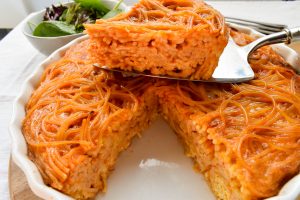 Recipe ideas: Arancine of pumpkin, sage and scamorza affumicata (smoked mozzarella), Frittata of creamed pumpkin, potato and baby spinach, Frittata of spaghetti, and Baked frittata with potatoes and broccolini.
Recipe ideas: Arancine of pumpkin, sage and scamorza affumicata (smoked mozzarella), Frittata of creamed pumpkin, potato and baby spinach, Frittata of spaghetti, and Baked frittata with potatoes and broccolini.
#7 Leftover raw vegetables:
Have you found a great special when buying vegetables in bulk but not sure how to use them? You can portion and freeze vegetables including asparagus, green beans, carrots, broccoli, cauliflower, pumpkin (squash) and capsicum (peppers). Alternatively make vegetable soups, casseroles and side dishes. Fennel is a great vegetable which can be used raw in salads, baked or braised. Another tip is to make just enough salad for one meal as a dressed salad cannot be used for other meals which is a waste.
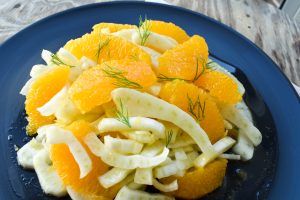 Recipe ideas: Braised fennel with olives, Insalata (salad) of orange and fennel, and Chickpea, pumpkin and spinach salad.
Recipe ideas: Braised fennel with olives, Insalata (salad) of orange and fennel, and Chickpea, pumpkin and spinach salad.
#8 Leftover meat:
Many people overlook giving leftover meat a second life. If you have left over meatballs (I know, not likely), make meatball panini the following day for lunch. Use leftover meat from roasts to make roast beef, lamb, pork or chicken sandwiches. Roasted or slow-cooked stewed meat also makes a great lunchbox salads. Roasted or slow-cooked stewed meat also makes a great lunchbox salads or could be converted to a hearty pie.
Let’s all stay calm! There is enough food produced in the world to feed everyone. Now that you have recipe ideas to cook, it’s time to open the pantry and see what’s inside!
Happy cooking X
Vanessa Bottaro
Vanessa is Creative Director of the Italian Spoon website and Author of The Italian entertaining cookbook, a collection of home-style Italian recipes and tips for entertaining in true Italian-style. In addition to cooking and taking photographs, Vanessa writes the recipes and blogs to bring the love of Italian cooking to life! The collection of recipes and blogs on the website have been inspired by travels to Italy and desire to share what she has learnt from the great ‘Mamma’s and ‘Nonna’s in her life!
Vanessa is an entrepreneur and wife to husband Simone and the mother of two beautiful kids Dante and Mia. Even so she was born and lives in Melbourne Australia, Vanessa has a deep connection to Italy. Perhaps it is the food, or maybe it is because it is the place where Vanessa met the love of her life, Simone to whom she has been happily married for so many years.
Latest posts by Vanessa Bottaro (see all)
- Italian Christmas menu 2022 - December 16, 2022
- 10 Show-Stopping Roast Ideas - November 18, 2022
- Healthy Italian food recipes - November 4, 2022
Recent Posts
-
16 December, 2022Italian Christmas menu 2022
-
18 November, 202210 Show-Stopping Roast Ideas
-
4 November, 2022Healthy Italian food recipes
-
21 October, 2022Tips to cooking the perfect pasta (just like nonna)
-
7 October, 20226 rules to make the perfect homemade Italian soup

